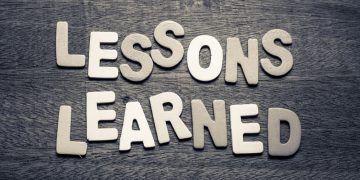According to research by the University of Manchester, up to 59% of ‘pre-hospital’ deaths from injury could potentially be prevented if more people stepped in with some simple first aid. Luckily, it is quite simple to lower that percentage. The way? Through training on first aid.
The World Health Organization defines first aid as the treatment aimed at preventing the death or further damage to health of an ill or injured person perceived to be in a life-threatening condition. All crew members should receive training in first aid.
All seafarers are required to have a basic level of training in elementary first aid, thus the STCW Basic First Aid training is mandatory. This training equips them with the necessary skills to take immediate action in the event of an accident or medical emergency on board, until a more qualified medical professional can take over.
This obligation is part of the broader duty to ensure the safety and well-being of all personnel on board. The training should comply with the standards specified in the STCW Code Convention Chapter VI, Section AV/1, Table A-VI/1-3, and align with the IMO model course 1.13.
As specified in the STCW ‘s “Specification of minimum standard of competence in elementary first aid”, seafarers should have an understanding of immediate measures to be taken in cases of emergency, including the ability to:
- Position casualty
- Apply resuscitation techniques
- Control bleeding
- Apply appropriate measures of basic shock management
- Apply appropriate measures in event of burns and scalds, including accidents caused by electric current
- Rescue and transport a casualty
- Improvise bandages and use materials in the emergency kit
Furthermore, The World Health Organization has published the 3rd Edition of The International Medical Guide for Ships. This useful guide outlines important steps that the crew should be able to take in case of an emergency and the recommended amounts of medicines that ships should carry. Since immediate response is essential for life-threatening conditions, the first chapters cover the principles of first aid, and how to respond to choking, bleeding, shock, pain, injuries, wounds, burns, and poisoning.
The guide starts with the ABC sequence of Basic Life Support; this is a sequence of actions aimed at resuscitating a person whose life is in danger. As explained, a person’s life is in danger when one or more of the two vital functions – breathing (respiratory function) and blood circulation (cardiac function) – have ceased or are about to cease and death is likely if proper action is not taken immediately.
Basic life support restores the two vital functions: breathing and blood circulation. It uses an “ABC” sequence of actions to ensure an open Airway aimed at restoring Breathing and blood Circulation. Cardio-pulmonary resuscitation (CPR) is the main component of basic life support: it consists of artificial respiration and external cardiac compression.




































![]](https://safety4sea.com/wp-content/uploads/2024/06/shutterstock_2318996555-350x250.jpg)




























Dear readers,
As mentioned in this article Elementary First Aid is a mandatory module in the initial STCW Basic Training. However, it is not being a mandatory part of the refresher sequence once every 5 years.
Though, depending on Flag State Administration, it may be a mandatory element to be refreshed once every 5 years too, like in the Netherlands.
During the implementation of the “Manila Amendments”, this was advised by the industry stakeholders (Shipowners, Shipowners association & Training providers) to the Dutch Flag State Administration to add Elementary First Aid to become a mandatory refresher module too, allowing seafarers practicing those skills on a more regular base.